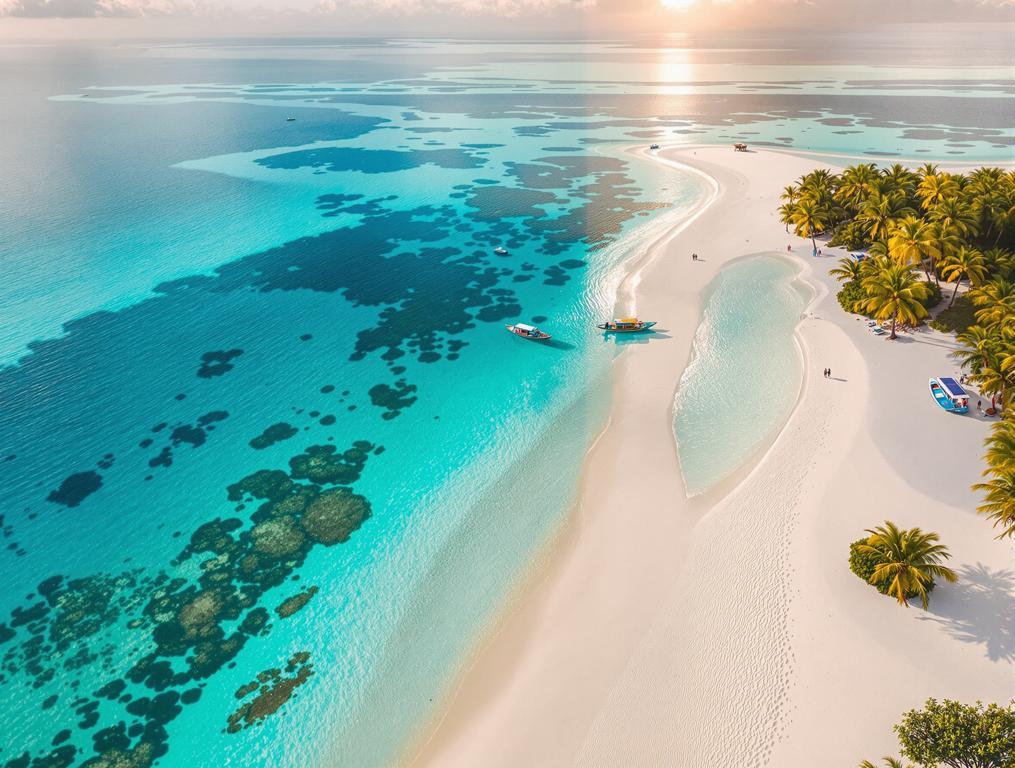The shadow of a 139-year-old lighthouse stretches across my feet as I step onto Minicoy’s powdery white sand. Just 130 kilometers north of the Maldives, this crescent-shaped island in India’s Lakshadweep archipelago has remained hidden from the international travel radar. At barely 4.8 square kilometers, Minicoy packs more authentic cultural experiences than resort islands triple its size.
A fisherman approaches, smiling beneath his weathered cap. “First time?” he asks in accented English. When I nod, he points toward eleven distinct villages visible from shore. “We have been here for centuries. The tourists? They all go to Maldives.”
A 139-year-old lighthouse guards India’s best-kept island secret
The British-built lighthouse, constructed in 1885, stands sentinel at 49.5 meters tall, offering the island’s most spectacular viewpoint. I count 250 metallic steps during my climb, stopping occasionally to catch my breath in the tropical heat.
Unlike the Maldives’ modern resort infrastructures, Minicoy’s villages—called Ava’h by locals—maintain traditional Islamic governance systems. Each of the 11 villages operates under an elected elder called Bodukaka, preserving a cultural system virtually unchanged for generations.
“The lighthouse can only hold 10-15 visitors at its top,” explains my guide as we near the summit. “But patience rewards you with views across the entire island, the massive lagoon, and on clear days, glimpses of passing ships navigating the Nine Degree Channel.”
From this height, I spot Thundi Beach, which earned the prestigious Blue Flag certification for environmental excellence—a stark contrast to Colombia’s protected beaches that rival Bali without crowds, offering similar pristine experiences but with a distinctly Indian cultural backdrop.
Just 130km from the Maldives but worlds apart: 11 traditional villages time forgot
While the Maldives receives millions of tourists annually, Minicoy remains refreshingly uncrowded. The island’s 15,100 residents maintain traditional livelihoods centered around tuna fishing and coconut harvesting, similar to how Western Australia’s coastal towns have built prosperity around their seafood heritage.
Walking through the villages, I notice intricate pathways connecting family homes. Women weave coconut fronds into mats while men repair colorful Jahadhoni boats used in traditional races. The vibrant Lava dance, performed during festivals, reveals the island’s distinct cultural identity.
“We don’t have fancy resorts or infinity pools. What we offer is something more valuable—a way of life that hasn’t been packaged for tourists. The moment you build luxury resorts, you lose what makes a place special.”
The islanders speak Mahl, a language closely related to Dhivehi in the Maldives, highlighting the historical connections between these neighboring maritime cultures. Yet unlike its famous neighbor, Minicoy has protected its traditions through limited, mindful tourism.
Similar to how Nagaland’s villages preserve ancient tribal traditions, Minicoy’s communities maintain Islamic customs largely unchanged for centuries, including their unique governance system where the Bodukaka oversees community decisions.
The 2025 advantage: New airport makes this cultural paradise more accessible
Currently, reaching Minicoy requires determination—a flight to Agatti Island followed by a 45-minute helicopter ride or an 8-hour boat journey. However, a new airport development slated for completion in 2025 will dramatically improve access while carefully managing visitor numbers.
The best time to visit falls between October and March, when calmer seas make for perfect swimming conditions in the shallow lagoon—a natural pool extending 500 meters from shore with depths of just 1-2 meters.
For adventurous travelers, the island offers scuba diving packages starting at ₹2,000 ($24), including equipment, instruction, and underwater photography. The shallow coral reefs teem with marine life, allowing even beginners to touch living corals and spot colorful fish.
Accommodation remains refreshingly simple—a government-run 20-bed tourist home and a handful of guesthouses provide clean, comfortable rooms without the price tag of Maldivian luxury resorts.
As evening falls, I join Sarah on Thundi Beach, where the only footprints belong to us and a few fishermen returning with their daily catch. My daughter Emma would love the turtles occasionally spotted near shore, I think, making a mental note for our next family adventure.
In local parlance, Minicoy embodies “Jazeera Raajje”—island kingdom—a self-contained world where traditions remain strong against the tide of modern tourism. As international travelers increasingly seek authentic cultural immersion over luxury amenities, Minicoy stands poised to become 2025’s most compelling Indian Ocean discovery.
